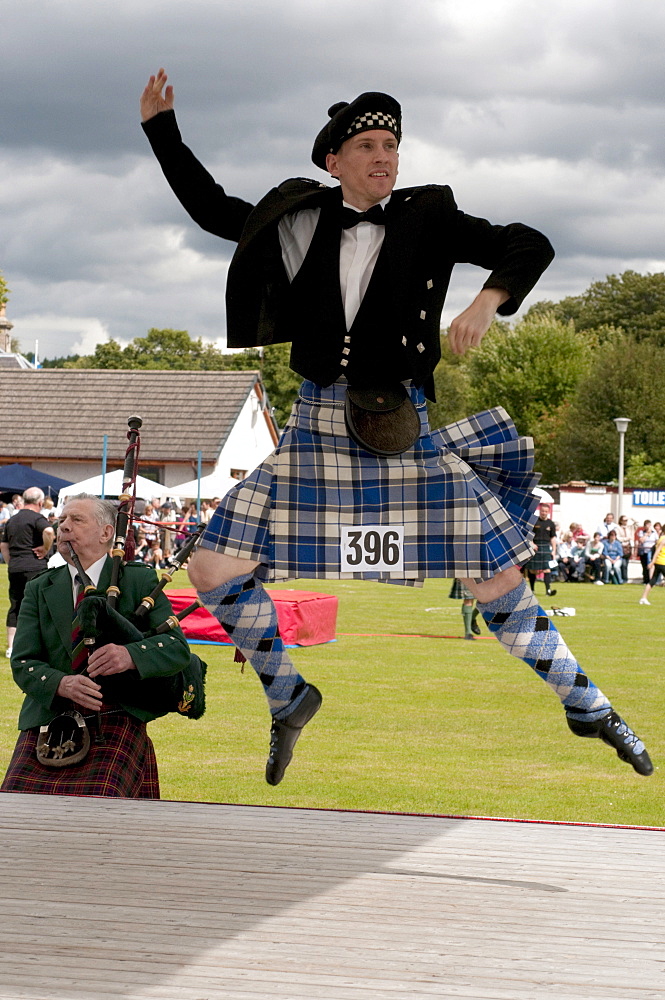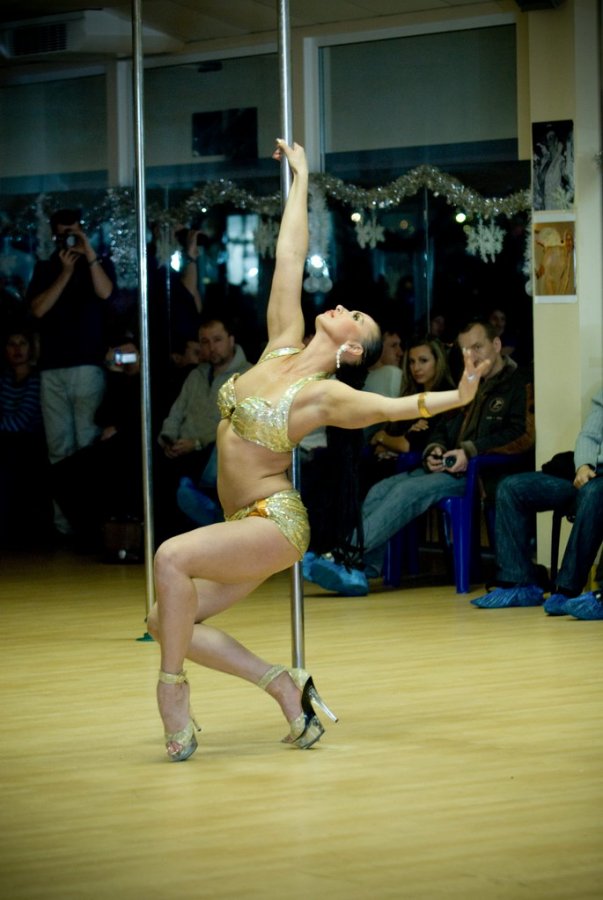How to play spider dance on guitar
Spider Dance (Muffet Theme) (Undertale) Guitar Tab
Spider Dance Song By Toby Fox Arranged By John Lee E S S E E S S E S S S S S S S S S S S S S S S S S S S S E S S E S S E||--0------------|-----------------|------------------|--------0---------|----------------| B||-----0---------|-----------------|----0-------0-----|------------3-0---|----------------| G||---------0-----|----3-2--2-0-----|------2-0-2-------|--0-------------0-|----------------| D||--2----2----2--|-------------1-2-|--------------1-2-|----2-1-----------|--2------4------| A||-----2---------|--3------2-------|------------------|------------------|--3--3-3----3-3-| E||---------------|-----------------|--0-------1-------|--3-------2-------|----------------| E S S E S S E E E E E S S S S E S S S S S S S S S S S S S S S S ----------------|--------0-----|----------------|--0-7-5-7-0-7-5-7-|--0-6--5-6---7---5-| ----------------|--0--------0--|--4--1---0------|------------------|---------------7---| --0------2------|-----2--------|----------------|----------0-------|-----------7-------| ----------------|--------------|----------------|------------------|-------------------| --3--3-3----3-3-|--2--------2--|--2----2---4-6--|--7---------------|-------------------| ----------------|--------------|----------------|------------------|----6p-5-----------| S S S S S S S S S S S S S S T T S S S S S S S S S S S S S S S S S E E E E ----7-5-7---7-5-7-|----7----7----8-7---8-|----3-2-3---5-3-5-|----7-5-7---8-7-8-|--------0-----| --5-------5-------|--8---10---10---------|--1-------3-------|------------------|--0--------0--| ------------------|---------9----7-----0-|------------------|----------7-------|-----2--------| ------------------|----------------9-7---|----------4-------|--7---------------|--------2-----| ------------------|----------------------|------------------|------------------|-----2-----2--| --5---------------|----------------------|--0---------------|--3-------5-------|--0-----------| E E E E E S S E E S S E S S S S S S S S S S S S S S S S S S S S --------------|--0------------|-----------------|------------------|--------0---------| --4--1--0-----|-----0---------|-----------------|----0-------0-----|------------3-0---| --------------|---------0-----|----3-2--2-0-----|------2-0-2-------|--0-------------0-| --1--------1--|--2----2----2--|-------------1-2-|--------------1-2-|----2-1-----------| -----3--2-----|-----2---------|--3------2-------|------------------|------------------| --------------|---------------|-----------------|--0-------1-------|--3-------2-------| E S S E S S E S S E S S E E E E E S S S S E S S S S S S S S ----------------|----------------|--------0-----|----------------|--0-7-5-7-0-7-5-7-| ----------------|----------------|--0--------0--|--4--1---0------|------------------| ----------------|--0------2------|-----2--------|----------------|----------0-------| --2------4------|----------------|--------------|----------------|------------------| --3--3-3----3-3-|--3--3-3----3-3-|--2--------2--|--2----2---4-6--|--7---------------| ----------------|----------------|--------------|----------------|------------------| S S S S S S S S S S S S S S S S S S S S S S T T S S S S S S S S S --0-6--5-6---7---5-|----7-5-7---7-5-7-|----7----7----8-7---8-|----3-2-3---5-3-5-| ---------------7---|--5-------5-------|--8---10---10---------|--1-------3-------| -----------7-------|------------------|---------9----7-----0-|------------------| -------------------|------------------|----------------9-7---|----------4-------| -------------------|------------------|----------------------|------------------| ----6p-5-----------|--5---------------|----------------------|--0---------------| S S S S S S S S E E E E E E S S S S E E E E E S E.E ----7-5-7---8-7-8-|--7------12--7--|--11--8--7-8-7-8-|--7-----------|---------------| ------------------|-----10---------|-----------------|-----8--------|---8----7------| ----------7-------|----------------|-----------------|--------9-----|------9--------| --7---------------|----------------|-----------------|-----------9--|---------------| ------------------|----------7-----|-----------------|--------7-----|--10----9---7--| --3-------5-------|--0---7------7--|--11--8--7-------|--7-----------|---------------| E S E. E E S E S S S E E E E E S E. E E S E. E ---------------|-----------8-7-8-|--7-----------|----------------|----------------| ---8----7------|---8----7--------|-----8--------|---8--10-7------|---8--10-7------| ------9--------|------9----------|--------9-----|----------------|----------------| ---------------|-----------------|-----------9--|----------------|----------------| --10----9---7--|--10----9--------|--------7-----|--10-----9---7--|--10-----9---7--| ---------------|-----------------|--7-----------|----------------|----------------| E S E S S S E E E E E S E.
E E S E. E E S E S S S ---------7--8-7-8-|--7-----------|---------------|---------------|-----------8-7-8-| ---8--10----------|-----8--------|---8----7------|---8----7------|---8----7--------| ------------------|--------9-----|------9--------|------9--------|------9----------| ------------------|-----------9--|---------------|---------------|-----------------| --10-----9----7---|--------7-----|--10----9---7--|--10----9---7--|--10----9--------| ------------------|--7-----------|---------------|---------------|-----------------| E E E E S E E. S S S S E E E E E Q E E E S S E E E S S --7--12---------|--5----5---3-5-|--6-5-3--0-----|-------------|--7------------|--3--0---------| ---------10--8--|----8----------|------------0--|--2--4--5----|-----8---------|--------1------| ----------------|---------------|---------------|-------------|--------9------|-----------0---| ----------------|--5----4-------|------1--1--1--|--------2----|-----------7-9-|---------------| ----------7-----|---------------|--3------------|--2----------|---------------|--0-----0----2-| --7-------------|---------------|---------------|-------------|--0-----0------|---------------| S S S S S S E S S S S S S S S S S S S S S S S S S S S S S S S ------3---2-3-0--|----0---0-2---0-2-|--0---0-2-3-2-3-5-|--7-5-3-2-3-2-0-2-| --1--------------|--4---4-----4-----|----0-------------|------------------| ----0---0--------|------------------|------------------|------------------| -----------------|------------------|------------------|------------------| --3-------3------|--2-------2-------|------------------|--0-------0---2-2-| -----------------|------------------|--0-------0-------|------------------| S S S S S S S S S S S S Q E E E E E S E.
E E S E. E ------10---8-10-7-8-|-----7------7----|--7-----------|---------------|---------------| ----8---------------|--10---8-10------|-----8--------|---8----7------|---8----7------| --9------9----------|-----------------|--------9-----|------9--------|------9--------| --------------------|-----------------|-----------9--|---------------|---------------| --------------------|-----------------|--------7-----|--10----9---7--|--10----9---7--| --8--------8--------|---7--------7----|--7-----------|---------------|---------------| E S E S S S E E E E S E E. S S S S E E E E E Q -----------8-7-8-|--7--12---------|--5----5---3-5-|--6-5-3--0-----|-------------| ---8----7--------|---------10--8--|----8----------|------------0--|--2--4--5----| ------9----------|----------------|---------------|---------------|-------------| -----------------|----------------|--5----4-------|------1--1--1--|--------2----| --10----9--------|----------7-----|---------------|--3------------|--2----------| -----------------|--7-------------|---------------|---------------|-------------| E S E S E E S E S E S T T E E S S Q Q E S E S E |------5-3--5-3--|-----5-3--5-3--|--3-5-3-----------|------------|-----5-3--5-3--| |----------------|---------------|--------5--5--4-5-|--L---------|---------------| |*---------------|---------------|------------------|------------|---------------| |*---------------|---------------|--2---------------|--2---------|---------------| |---3------------|--3------------|------------------|------------|--3------------| |----------------|---------------|------------------|------------|---------------| E S E S E E E S E S Q Q E S E S E E S S S S S S -----5-3--5-3--|--3--5--6-5--3-|--0----------||---------------|-----------------| ---------------|---------------|-------------||--5------------|--L------4-3-2-1-| ---------------|---------------|------------*||-----2-0--2-0--|-----2-0---2-0---| ---------------|--2------------|--2---------*||---------------|-----------------| --3------------|---------------|-------------||---------------|-----------------| ---------------|---------------|-------------||---------------|-----------------| S S E E S S Q S S S S E S E S E E S S S S E E E S E S H ----------------|---------------|---------------|---------3------|--2------------|--3--------| --0-------------|--L----1-2-3-4-|--5------------|--L-------------|---------------|-----------| --0-2-0---------|---------------|-----2-0--2-0--|-----2-0---2-0--|--0--2--3-2--0-|-----------| ---------2--1-2-|---------------|---------------|----------------|---------------|--2--------| ----------------|---------------|---------------|----------------|---------------|-----------| ----------------|---------------|---------------|----------------|---------------|-----------| E S E S E E S S S S E E E S E S E.
T T Q E E E E --0------------|----------------|--7--7--11-7-----|--7-------------|--7-----------| ---------------|----------------|--------------10-|----------------|-----8--------| -----2-0--2-0--|-----2-0---2-0--|---------8-------|------8-9-11----|--------9-----| ---------------|----------------|--9--9-----9---7-|--9-------------|-----------9--| ---------------|----------------|-----------------|----------------|--7-----------| ---------------|----------------|-----------------|----------------|--------------| E S E. E E S E. E E S S S S S S E E E E S E E. S S --------------|---------------|-----------8-7-8-|--7--12---------|--5----5-----5-| --8----7------|---8----7------|--8----7---------|---------10--8--|----8------8---| -----9--------|------9--------|-----9-----------|----------------|---------------| --7-----------|--10-----------|--9------9-------|----------------|--7------------| --------------|---------------|-------------6---|--7-------------|---------------| --------------|---------------|-----------------|----------------|---------------| S S E E E E E Q H --6-5-3--0-----|-------------|-----------|| ------------0--|--2--4--5----|--L--------|| ---------------|-------------|-----------|| ------1--1--1--|-----1--2----|--L--------|| --3------------|--2----------|-----------|| ---------------|-------------|-----------|| Duration Legend --------------- W - whole H - half Q - quarter E - 8th S - 16th T - 32nd X - 64th .
- brush up v - brush down
Login or Register to remove this ad.
5 comments on Spider Dance (Muffet Theme)
Play Spider Dance (Undertale) Music Sheet
g s O i a P P O u i s P O P s u i i i g s O i i o O P s P g s f S s g s O i a P P O u i s P O P s u i i i g s O i i o O P s P g s f S s g s O i a P P O u i s P O P s u i i i g s O i i o O P s P g s f S s
g s O i a P P O u i s P O P s u i i i g s O i i o O P O P s i P O o
S s S s O i t O i o O i o O i o S s S s O i t O P o O P o O P s S s S s O i t O i o O i o O i o S s S s g s O P O P O P a P O i t T u i
Rate This Music Sheet:
Average rating 0 / 5. Vote count: 0
No votes so far! Be the first to rate this music sheet.
Thank you for rating this song!
If you have any specific feedback about how to improve this music sheet, please submit this in the box below.
Play this song
Note Labels
Animation Fun Undertale
About This Music Sheet
Spider Dance (Undertale) is a song by Toby Fox. Use your computer keyboard to play Spider Dance (Undertale) music sheet on Virtual Piano. This is an Easy song and requires practice. The song Spider Dance (Undertale) is classified in the genre of Songs From Games on Virtual Piano. You can also find other similar songs using Animation, Fun, Undertale.
Use your computer keyboard to play Spider Dance (Undertale) music sheet on Virtual Piano. This is an Easy song and requires practice. The song Spider Dance (Undertale) is classified in the genre of Songs From Games on Virtual Piano. You can also find other similar songs using Animation, Fun, Undertale.
Comments
Virtual Piano uses Facebook Comments. Log in to Facebook, then return to this section to see comments from other users and engage with the Virtual Piano community.
Other Songs By Toby Fox
-
[$eTI] S[$I] S3 [$S]s[!I]pf
[$rYI] S[$I] S3 [$S]a[!I]pa
[$WuI] S[$I] S3 [$S]s[!I]pf
[$WtI] S[$I] S3 [$C]CC[!C]zzzz
[$eTI] S[$I] S3 [$S]s[!I]pf
[$rYI] S[$I] S3 [$S]a[!I]pa
[$WuI] S[$I] S3 [$S]s[!I]pf
[$WtI] S[$I] S3 [$C]CC[!C]zzzz
$$ 3 $ !
$$ 3 $ !
$$ 3 $ !
$$ 3 $ !
[$jL]$ 3 $ !
[$kZ]$ 3 $ !
[$Hx]$ 3 $ !
[$Hl]$ 3 $ !Spamton (Deltarune)
Toby Fox
-
[sx] [fh] [fh]
[sk] [fh] [fh]
[sj] [gh] k [ghl]
[sv] [gh] [gh]
[sx] [fh] [fh]
[sk] [fh] [fh]
[sj] [gh] k [ghl]
[sn] [gh] [gh]
[sx] [fh] [fh]
[sk] [fhv] [fhb]
[sj] [gh] k [ghl]
[gb] [fv] [dc]
[gx] c x
[hz] l
l h g
f[8of] [0w] [0wd]
[7of] [0w] g [0wh]
[6fl] [80] [80]
5 [8dk] [8fl]
[4dk] [89] [8sj]
[3ah] [9w] [9wg]
[2of] [68] g [2f]
[5od] [5if]
[6us] [0w] [0wa]
[5is] [qw] d [qwf]
[5uk] [0w] [5yj]
[5tf] s
[4s]
$ [Qf] [4s]
[5of] g f
[59d] w 9
[8of] [0w] [0wd]
[7of] [0w] g [0wh]
[6fl] [80] [80]
5 [8dk] [8fl]
[4dk] [89] [8sj]
[3ah] [9w] [9wg]
[2of] [68] g [2f]
[5od] [5if]
[6us] [0w] [0wa]
[5is] [qw] d [qwf]
[5fk] [0w] [5dj]
[4sf] s
[4s] $ [Qa] [5s]
[5of] g f
[5id] w [9x] z
[el] t [uh]
[wx] t c [uz] l
[ql] t u
q t [ux] z
[el] t [uh]
[wx] t c [uz] l
[ql] [tm] [un]
[qv] [tx] [uhz]
[elx] t [uh]
[wx] t c [uz] l
[ql] [tl] [uz]
[qx] [tc] [uhv]
[ejx] t [uh]
[wx] t c [uz] l
[9l] Q [tj]
[Qx] t z [ul] x
[wz] t y
[wv] [kx]
[9lc] w [zv] [txb]
[rzv] t y
0 [wh] [th]
[yh] g f g
[qh] e [tl]
[yh]
0 [wh] [th]
[yh] g f g
[wh] [td] [ya]
[us]
0 [wh] [th]
[yh] g f g
[qh] e [tl]
[yh] s d
[9g] [qf] [es]
[wo] s a
[es] [ux] z [tl] z
[wx] l z
[gjc] x l
h l kA Town Called Hometown (Deltarune) (Alternative)
Toby Fox
-
[sx] [fh] [fh]
[sk] [fh] [fh]
[sj] [gh] k [ghl]
[sv] [gh] [gh]
[sx] [fh] [fh]
[sk] [fh] [fh]
[sj] [gh] k [ghl]
[sn] [gh] [gh]
[sx] [fh] [fh]
[sk] [fhv] [fhb]
[sj] [gh] k [ghl]
[gb] [fv] [dc]
[gx] c x
[hz] l
l h g
f[8of] [0w] [0wd]
[7of] [0w] g [0wh]
[6fl] [80] [80]
5 [80dk] [80fl]
[4dk] [89] [89sj]
[3ah] [9w] [9wg]
[2of] [68] g [2f]
[5od] [%if]
[6us] [0w] [0wa]
[%is] [qw] d [qwf]
[5ufk] [0w] [5ydj]
[$tsf] s
[4s]
$ [Qf] [$s]
[50of] g f
[59id] w 9
[8of] [0w] [0wd]
[7of] [0w] g [0wh]
[6fl] [80] [80]
5 [80dk] [80fl]
[4dk] [89] [89sj]
[3ah] [9w] [9wg]
[2of] [68] g [2f]
[5od] [%if]
[6us] [0w] [0wa]
[%is] [qw] d [qwf]
[5ufk] [0w] [5ydj]
[$tsf] s
[4s]$ [Qa] [$s]
[50of] g f
[59id] w [9x] z
[el] t [uh]
[wx] t c [uz] l
[ql] t u
q t [ux] z
[el] t [uh]
[wx] t c [uz] l
[ql] [tm] [un]
[qv] [tx] [uhz]
[elx] t [uh]
[wx] t c [uz] l
[ql] [tl] [uz]
[qx] [tc] [uhzv]
[ejlx] t [uh]
[wx] t c [uz] l
[9l] Q [tj]
[Qx] t z [ul] x
[wz] t y
[wv] [kx]
[9lc] w [zv] [txb]
[rzv] t y
0 [wh] [th]
[yh] g f g
[qh] e [tl]
[yh]
0 [wh] [th]
[yh] g f g
[wh] [td] [ya]
[us]
0 [wh] [th]
[yh] g f g
[qh] e [tl]
[yh] s d
[9g] [qf] [es]
[wo] s a
[es] [ux] z [tl] z
[wx] l z
[gjc] x l
h l kA Town Called Hometown (Deltarune)
Toby Fox
-
w [y8] t [w8] r 8r|[t8]|[w8] t [w8] r 8r|[t8] w [y8] t [w8] r 8r|[t8]|[w8] t [u8] y 8t|[y8] w [y8] t [w8] r 8r|[t8]|[w8] t [w8] r 8r|[t8] w [y8] t [w8] r 8r|[t8]|[w8] t [u8] y 8t|[y8] [w8] [yq] [t8] [wq] [r8] qr8 [tq] 8 [wq] [t8] [wq] [r8] qr8 [tq] [w8] [y0] [t8] [w0] [r8] 0r8 [t0] 8 [w0] [t8] [u0] [y8] 0t8 [y0] [w8] [yq] [t8] [wq] [r8] qr8 [tq] 8 [wq] [t8] [wq] [r8] qr8 [tq] [w9] [yw] [t9] w [r9] wr9 [wt] 0 [we] [t0] [ue] [y0] et0 [ye] [wo8] [yq] [t8] q [roh8] qr8 [tq] [yd8] q [t8] q [r8] qr8 [tq] [ts8] [y0] [t8] 0 [roh8] 0r8 [t0] [wo8] [w0] [t8] [u0] [y8] 0t8 [y0] [wo8] [yq] [t8] q [ra8] qr8 [tq] [oh8] q [t8] q [r8] qr[pj8] [tq] [oh9] [yw] [t9] w [yrd9] wr9 [wt] [ts0] [we] [t0] [ue] [y0] et0 [ye] [wo8] [yq] [t8] q [roh8] qr8 [tq] [yd8] q [t8] q [r8] qr8 [tq] [ts8] [y0] [t8] 0 [roh8] 0r8 [t0] [wo8] [w0] [t8] [u0] [y8] 0t8 [y0] [wo8] [yq] [t8] q [ra8] qr8 [tq] [oh8] q [t8] q [r8] qr[pj8] [tq] [oh9] [yw] [t9] w [yrd9] wr9 [wt] [tse60] l k h f d s o [wto8] [yq] [t8] q [sroh8] qr8 [tq] [yod8] q [t8] q [r8] qr8 [tq] [tso8] [y0] [t8] 0 [sroh8] 0r8 [t0] [wto8] [w0] [t8] [u0] [y8] 0t8 [y0] [wto8] [yq] [t8] q [roa8] qr8 [tq] [soh8] q [t8] q [r8] qr[spj8] [tq] [soh9] [yw] [t9] w [yrod9] wr9 [wt] [tso0] [we] [t0] [ue] [y0] et0 [ye] [wto8] [yq] [t8] q [sroh8] qr8 [tq] [yod8] q [t8] q [rd8] [qf]r[d8] [tsq] [tso8] [y0] [t8] 0 [sroh8] 0r8 [t0] [wto8] [w0] [t8] [u0] [a8] [s0] [f8] [j0] [wto8] [yq] [t8] q [yrda8] qr8 [tq] [soh8] q [t8] q [sr8] [qa]r[spj8] [tqd] [sohf9] [yw] [t9] w [yrod9] wr9 [wts] [tso0] [we] [t0] [ue] [y0] et0 [ye] [wtqo4] q [t8] q [sroh8] qr8 [tq] [yqod4] q [t8] q [r8] qr8 [tq] [tso30] 0 [t8] 0 [sroh8] 0r8 [t0] [wto30] [w0] [t8] [u0] [y8] 0t8 [y0] [wtqo4] q [t8] q [roa8] qr8 [tq] [sqoh5] q [t8] q [r8] qr[spj8] [tq] [wsoh5] w [t9] w [yrod9] wr9 [wt] [tsoe6] [we] [t0] [ue] [y0] et0 [ye] [wtqo4] q [t8] q [sroh8] qr8 [tq] [yqod4] q [t8] q [rd8] [qf]r[d8] [tsq] [tso30] 0 [t8] 0 [sroh8] 0r8 [t0] [wto30] [w0] [t8] [u0] [a8] [s0] [f8] [j0] [wtqo4] q [t8] q [yrda8] qr8 [tq] [sqoh5] q [t8] q [sr8] [qa]r[spj8] [tqd] [wsohf5] w [t9] w [yrod9] wr9 [wts] [tsoe60] l k h f d s o [qo]| |h|f|[qd]|s|a|s|[wd]| |k||Jj[th]|||[qp]| |h|f|[qd]|s|d|f|[wa]| |d| |[ed]|s|[wa]|s|[toe]|q|[the]|[qf]|[red]|[sq]|[rea]|[sq]|[yrd]|w|[yrk]|w Jj[uth]|w|[ut]|w|[tpe]|q|[the]|[qf]|[red]|[sq]|[rea]|[sq]|[yra]|w|[yrd]|w|[utd]|[se]|[yra]|[ws]|[wqo4] q [t8] q [roh8] qr8 [tq] [ywd5] w [t9] w [r9] wr9 [wt] [ts30] 0 [t8] 0 [roh8] 0r8 [t0] [woe6] [we] [t0] [ue] [y0] et0 [ye] [wqo4] q [t8] q [ra8] qr8 [tq] [woh5] w [t9] w [r9] wr[pj9] [wt] [oh40] 0 [t8] 0 [yrd8] 0r8 [t0] [tse6] [we] [t0] [ue] [y0] et0 [ye] [wtqo4] q [t8] q [sroh8] qr8 [tq] [ywod5] w [t9] w [sroh9] wr[spj9] [wt] [tso30] 0 [t8] 0 [sroh8] 0r8 [wto0] [wtoe6] [we] [t0] [ue] [yf0] [ge]t[f0] [yed] [tsqo4] q [t8] q [ura8] qr8 [tq] [wsoh5] w [t9] w [rd9] wr[spj9] [wt] [soh40] 0 [ts8] 0 [yrod8] 0r[o8] [t0] [tsoe6] [wle] [tk0] [uhe] [yf0] [ed]t[s0] [yoe] [wto4] q [ts8] q [sroh8] qr[d8] [tq] [yod5] w [tp9] w [yroa9] wr[so9] [wt] [tso3] 0 [th8] 0 [sroh8] 0r[s8] [t0] [wto6] [wfe] [tk0] [ule] [yx0] [ze]t[l0] [yhe] [wto4] q [t8] q [ura8] qr8 [tq] [soh5] w [t9] w [rd9] wr[spj9] [wt] [soh4] 0 [ts8] 0 [yrod8] 0r[o8] [t0] [tso6] [wle] [tk0] [uhe] [yf0] [ed]t[s0] [yoe] [wto4] q [ts8] q [sroh8] qr[d8] [tq] [yod5] w [tp9] w [yroa9] wr[so9] [wt] [tso3] 0 [th8] 0 [sroh8] 0r[s8] [t0] [wto6] [wfe] [tk0] [ule] [yx0] [ze]t[l0] [yhe] [wto4] q [t8] q [ura8] qr8 [tq] [soh5] w [t9] w [rd9] wr[spj9] [wt] [soh4] 0 [ts8] 0 [yrod8] 0r[o8] [t0] [tso6] [wle] [tk0] [uhe] [yf0] [ed]t[s0] [yoe] [o81] d s o [ta8]|a|s [w5] o s o [a30]|a[q4] s [wo5] d s o [wa5]|a[q4] s [30] o s f [td8]|s[y9] d [tqoe8] d s o [tea8]|a[ue0] s [ywr9] o s o [wta8]|a[yw9] s [wo750] d [wus0] o [ywa9]|a[wt8] s [te80] o s f d|s|d [o81] d s o [ta8]|a|s [w5] o s o [a30]|a[q4] s [wo5] d s o [wa5]|a[q4] s [30] o s f [td8]|s[y9] d [tqoe8] d s o [tea8]|a[ue0] s [ywr9] o s o [wta8]|a[yw9] s [wo750] d [wus0] o [ywa9]|a[wt8] s [te80] o s f d|s|d
Undertale (Undertale)
Toby Fox
-
eep u Y y t etywwp u Y y t etyQQp u Y y t etyqqp u Y y t ety[e6]e[p6] [u6]6 [Y6] [y6] [t6]6[e6][t6]y[w5]w[wp5] [u5]5 [Y5] [y5] [t5]5[e5][t5]y[Q$]Q[pQ$] [u$]$ [Y$] [y$] [t$]$[e$][t$]y[q4]q[qp4] [u4]4 [wY5] [y5] [t5]5[e5][t5]y[pe6][pe][pj6] [uf6]6 [YD6] [yd6] [ts6]6[pe6][ts6][yd6][wo5][wo][pj5] [uf5]5 [YD5] [yd5] [ts5]5[pe5][ts5][yd][QI$][QI][pj$] [uf$]$ [YD$] [yd$] [ts$]$[pe$][ts$][yd][qi4][qi][pj4] [uf4]4 [YD5] [yd5] [ts5]5[pe5][ts5][yd][pe6][pe][pj6] [uf6]6 [YD6] [yd6] [ts6]6[pe6][ts6][yd6][wo5][wo][pj5] [uf5]5 [YD5] [yd5] [ts5]5[pe5][ts5][yd][QI$][QI][pj$] [uf$]$ [YD$] [yd$] [ts$]$[pe$][ts$][yd][qi4][qi][pj4] [uf4]4 [YD5] [yd5] [ts5]5[pe5][o5]pa[a6]s [s6]s6[s6] [a6]s [p6] [p6]66e [s5] [s5]s5[d5] [D5] [d5]Dd[p5][s5][d5]w5[s$] [s$]s$[d$] [D$] [f$] [h$]$[f$]Q [j4] [j4] [j4][f4]j[h5] 5 [z5]55w5[sfe6]e[spf][sf]u[sf] [aYD][sf] [ypd] [tpd] ety[wsf5]w[spf] [usf][sf] [pdY] [ysf] [tja] [pfe][tod]y[sjQ$]Q[pf] [ud] sY[ha]ydtse[ta]y[yqi4]q[pi][oa]u[sp] [ha5] y t ety4 4 44 4[sp][pi4][sp][pd4][pD4][pd4][sp4][pi][sD5][da]p[sp5] [da5]5 5 5 55[D5]5f[h6] [f6]D[d6][s6]p[a6]s6d6[f6]6[h6] [H%] [D%] [D%][d%]s[d^] ^ ^^^^ [tp4] [ya4] [us4]4[lf]4[kd]4 4[sj4]44 [kd5] 5 [lf5]5 5[zh]5 5[kf5]55 [xj6] 6 66 6x[Z6]z[L6][l6][k6][J6]j[HD%] % [j%]% ^[gJ]^ ^^^^ 4 4 44 4[sp][pi4][sp][pd4][pD4][pd4][sp4][pi][sD5][da]p[sp5] [da5]5 5 5 55[D5]5f[h6] [f6]D[d6][s6]p[a6]s6d6[f6]6[h6] [H%] [D%] [D%][d%]s[d^] ^ ^^^^ [tp4] [ya4] [us4]4[lf]4[kd]4 4[sj4]44 [kd5] 5 [lf5]5 5[zh]5 5[kf5]55 [xj6] 6 66 6x[Z6]z[L6][l6][k6][J6]j[HD%] % [j%]% ^[gJ]^ ^^^^ [q4] 4 44 4 4 4[t4]44 [r5] 5 55 5e5 5555 [t$] $ $$ $ $ $$$$ $ $ $$ $ $ $$$$ [q4] 4 44 4 4 4[t4]44 [r5] 5 55 5e5 5555 [e6] 6 66 6 6 6666 6 6 [e6]W6wQq60(96*876^666 [q4]6e 0 ( 9 8t689[r5]5e 0 (e9 8 689[t$]$e 0 ( 9 8 689[d$][j$][le]j[z0] l(j[h9] [f8] [d6][f8][h9][q4]6e 0 ( 9 8t689[r5]5e 0 (e9 8 689[e6]6[tse] [ra0] [wo(] [ra9] [pe8] [y6][u8][o9]66[tse] [ra0] [wo(] [ra9] [pe8] [y6][u8][o9]4 4 44 4 4 4444 5 5 55 5 5 555556 6 66 % % %%%% 5 5 55 $ $ $$$$ 4 4 44 4 4 4444 5 5 55 5 5 555556 6 66 6 6 6666 6 6 66 6 6 6666 4 4 44 4 4 4444 5 5 55 5 5 555556 6 66 % % %%%% 5 5 55 $ $ $$$$ 4 4 44 4 4 4444 5 5 55 5 5 55555[e6]e[p6] [u6]6 [Y6] [y6] [t6]6[e6][t6]y[e6]e[p6] [u6]6 [Y6] [y6] [t6]6[e6][t6]yqqp u Y y t etywwp u Y y t etyeep u Y y t etyeep u Y y t etyqqp u Y y t etywwp u Y y t ety
Megalovania (Undertale) (Alternative)
Toby Fox
Related
-
6 j h f h f 8 f d s d f
6 j h f h f 8 5
a a a a s s p o s s p o s d d 5
a a a a s s p o s s p o s d d 5
s s j j h h f f d s f h f 5
a a a a s s p o s s p o 8 d a s
6 0 j h f h f 8 w f d s d f
6 0 j h f h f 8 w f d s d fWhistle (Easy)
Flo Rida
-
e T T T e T T T S [I7] e S [a0] p a T [f6] f f f [fT] S S a [a9] p T S [I7] e S [a0] p a T [f6] f f f [fT] S S a [a9] p S S a p [a7] u [eS] S a p [a0] u [TS] S a p [a6] u [TS] S a p [a9] u T S [I7] e S [a0] p a T [f6] f f f [fT] S S a [a9] p T [d7] d d d [ed] d d d [f0] S T [d6] d d d [dT] d d d [f9] S T [a7] p a p [ea] p a p [a0] T p [a6] p a p [aT] p a p a d d d d [f7] S S [eS] d S [a0] [dT] d d d [f6] d S [TS] d S [a9] [dT] d d d [f7] d S [eS] d S [a0] [dT] d d d [f6] d S [TS] d S [a9] T a p [a7] p [pe] [a0] p [pT] p [a6] S S S [TS] a p p [a9] p [pT] [a7] p [pe] [a0] p [pT] [a6] S S S [TS] a p p a p p S [I7] e S [a0] p a T [f6] f f f [fT] S S a [a9] p T S [I7] e S [a0] p a T [f6] f f f [fT] S S a [a9] p S S a p [a7] u [eS] S a p [a0] u [TS] S a p [a6] u [TS] S a p [a9] u T S [I7] e S [a0] p a T [f6] f f f [fT] S S a [a9] p T S a [S7] S e S a [S0] S T S a [S6] S a [TS] a S a [S9] S T S a [a7] u e S p [a0] u T S p [a6] a [aT] S a p [a9] u T S p [f7] S a e S S [f0] S a T S S [S6] S S [TS] S S f S a p [S7] a a p [ea] p a [a0] a p [aT] I [a6] S a p [aT] p a p [a9] p a p [aT] a p [a7] p [pe] [a0] p [pT] p [a6] S S S [TS] a p p [a9] p [pT] [a7] p [pe] [a0] p [pT] [a6] S S S [TS] a p p a p p S [I7] e S [a0] p a T [f6] f f f [fT] S S a [a9] p T S [I7] e S [a0] p a T [f6] f f f [fT] S S a a p S S a p [a6] u [TS] S a p [a9] u [TS] S a p [a7] u [eS] S a p [a0] u T S [I6] T S [a9] p a T [f7] f f f [fe] S S a [a0] p T e T T T e T T T
Roxanne (Easy)
Arizona Zervas
-
q u p e u e t i u t
q u p e u e t i u t
q u p e u e t i u t
q u p e u e t i u t
q u p e u e t i u t
q u p e u e t i u t
q u p e u e t i u t
q u p e u e t i u t
[qj] [us] p [pj] e f u f [ej] [tj] i [uj] j [tj] j
[qj] [uj] [jx] p [es] [uf] [es] f t i u j [tf]
[qf] [ug] f [pg] [ef] g u s [es] [ts] i [ug] t
[qj] [uf] p [es] [us] [ef] t [is] [up] [tj] j
[qg] [uf] p [es] f [uj] l e t i [ug] f t f
[qp] u p p [efj] [up] e [tp] [ip] u [gj] [tf]
[qg] [uf] p [ep] u [es] t [ip] [up] t
q u p e u e t i u t p
[qf] u p [ef] u p [ef] p t [ip] [uf] t p
[qf] u p [ef] u p [ef] t [ip] [up] t
q u p e u e t i u t
q u p e u e [ta] [is] [ua] s [ta] o
[qp] [us] p [ps] e s [up] [fj] e t i u t
q u p e u e t i u t
q u p e u [ef] x t i u t
q u p e u e t i u t
[qf] u p [es] u e t i u t
q u p e u e t i [uh] t
[qa] u p e u e t i u t
[qf] u p e u e t i u t
[qf] u p [es] u e t i u t
q u p e u e t i [uh] t
[qa] u p e u e t i u t
[qf] u p e u e t i u t
[qf] u p [es] u e t i u t
q u p e u e t i [uh] t
[qa] u p e u e t i u t
[qf] u p e u e t i u t
[qfj] u p [es] u e t i u t
q u p e u e t i [uhl] t
[qak] u p e u e t i u t
[qfj] u p e u e t i [uh] t
[qfj] u p [es] u e t i u t
q u p e u [el] t i [uhl] [tz] l
[qak] u p e u [eh] t i u t
[qfj] u p e u e t i [uhx] t
[qfj] u p [es] u e t i u t
q u p e u [el] t i [uhl] [tz] l
[qak] u p e u [eh] t i u t
[qfj] u d [ph] [ef] u e [td] [ih] [uf] [td]
[qpf] u d p [ef] [ud] [ef] [td] i [uf] [td]
[qf] u d p [ef] [ud] [ef] [td] i [uf] [td]
[qf] u p e u e t i u t
q u p e u e t i u t
[qf] u p [es] u e t i u t
q u p e u e t i [uh] [tf]
[qa] u p e u e t i u t
q u p e u e t i u t
[qf] x u p [es] u e t i u t
q u p e u e t i [uh] [tf]
[qa] u p e u e t i u t
q u p e u e t i u t
[qfx] u [pj] [esl] u e t i u [tak]
[qsl] u [fx] [pj] e u e t i [uhv] [tfx]
[qak] u [pj] e u e [ts] [ig] [uf] [ts]
[qi] [uf] [pj] [ep] [uf] [ep] [ts] [ig] [uf] [ts]
[qix] [uf] [pj] [epl] [uf] [ep] [ts] [ig] [uf] [tsk]
[qil] [uf] x [pj] [ep] [uf] [ep] [ts] [ig] [ufv] [tsx]
[qik] [uf] [pj] [ep] [uf] [ep] [ts] [ig] [uf] [ts]
[qi] [uf] [pj] [ep] [uf] [ep] [ts] [ig] [uf] [ts]
[qifx] [uf] [pj] [epsl] [uf] [ep] [ts] [ig] [uf] [task]
[qisl] [uf] [fx] [pj] [ep] [uf] [ep] [ts] [ig] [ufhv] [tsfx]
[qiak] [uf] [pj] [ep] [uf] [ep] [ts] [ig] [uf] [ts]
[qi] [uf] [pj] [ep] [uf] [ep] [ts] [ig] [uf] [ts]
[qifx] [uf] [pj] [epsl] [uf] [ep] [ts] [ig] [uf] [task]
[qisl] [uf] [fx] [pj] [ep] [uf] [ep] [ts] [ig] [ufhv] [tsfx]
[qiak] [uf] [pj] [ep] [uf] [ep] [ts] [ig] [uf] [ts]
[qi] [uf] [pj] [ep] [uf] [ep] [ts] [ig] [uf] [ts]
[6epfx] [uf] [pj] [epsl] [uf] [ep] [ts] [ig] [uf] [task]
[8tsl] [uf] [fx] [pj] [ts] [uf] [ts] [ts] [ig] [ufhv] [tsfx]
[5woak] [uf] [pj] [wo] [uf] [wo] [ts] [ig] [uf] [ts]
[4qi] [uf] [pj] [ep] [uf] [ep] [ts] [ig] [uf] [ts]
[6epfx] [uf] [pj] [epsl] [uf] [ep] [ts] [ig] [uf] [task]
[8tsl] [uf] [fx] [pj] [ts] [uf] [ts] [ts] [ig] [ufhv] [tsfx]
[5woak] [uf] [pj] [wo] [uf] [wo] [ts] [ig] [uf] [ts]
[4qi] [uf] [pj] [ep] [uf] [ep] [ts] [ig] [uf] [ts]
[6efx] u [pj] [esl] u e t i u [tak]
[8tslc] u [fx] [pj] t u [tv] t i [uhv] [tfx]
[5wak] u [pj] w u [wl] t i u t
[4qj] u p e u e t i [uh] t
[6efx] u [pj] [esl] u e t i u [tak]
[8tslc] u [fx] [pj] t u [tv] t i [uhv] [tfx]
[5wahk] u [pj] w u [wl] t i u t
[4qfj] u p e u [efh] t i u t
[6efjlx] u [pj] [esl] u e t i [uk] [tak]
[8tsglc] u [fx] [pj] t u [thv] t i [uhlv] [tfx]
[5wak] u [pj] w u [wsjl] t i u t
[4qpsj] u p e u [esh] t i u t
[6efjlx] u [pj] [esl] u e t i [uak] [tak]
[8tsglc] u [fx] [pj] t u [thv] t i [uhlv] [tfx]
[5wadhk] u [pj] w u [wsh] t i u t
[4qupsf] u p e u [eipd] t i u t
[efx] u [pj] [esl] u e t i u [tak]
[tsl] u [fx] [pj] t u t t i [uhv] [tfx]
[wak] u [pj] w u w t i u t
q u p e u e t i u t
[efx] u [pj] [esl] u e t i u [tak]
[tsl] u [fx] [pj] t u t t i [uhv] [tfx]
[wak] u [pj] w u w t i u t
q u p e u e t i u t
[efx] u [pj] [esl] u e t i u [tak]
[tsl] u [fx] [pj] t u t t i [uhv] [tfx]
[wak] u [pj] w u w t i u t
q u p e u e t i u t
qAria Math (Minecraft)
C418
Easy guitar picks - beautiful melodies for beginners
May 27, 2020
The period of learning to play a musical instrument passes faster and more pleasantly when the compositions that you learn sound good and beautiful, and the first results can be easily demonstrated to your friends and family. Light picking on the guitar sounds very impressive, easy to learn, and they also have a beneficial effect on the overall ability to play the instrument. In this article, we will analyze beautiful guitar picking melodies for beginners. All searches will be presented in the form of tablature. Learn how to read guitar tabs correctly here.
Light picking on the guitar sounds very impressive, easy to learn, and they also have a beneficial effect on the overall ability to play the instrument. In this article, we will analyze beautiful guitar picking melodies for beginners. All searches will be presented in the form of tablature. Learn how to read guitar tabs correctly here.
Content:
- Light guitar picks
- Pick from Nirvana - Come As You Are
- Dancing Minus - Half
- The easiest guitar pick
- Intro Metallica – Nothing Else Matters
- Guitar Melodies for Beginners
- Intro song Aria - Carefree Angel
- Pick from Animals - The House Of The Rising Sun
- Selection from the intro of the song Led Zeppelin - Stairway to heaven
Light guitar picks
Pick from Nirvana - Come As You Are
A very famous intro to a song by a no less famous rock band.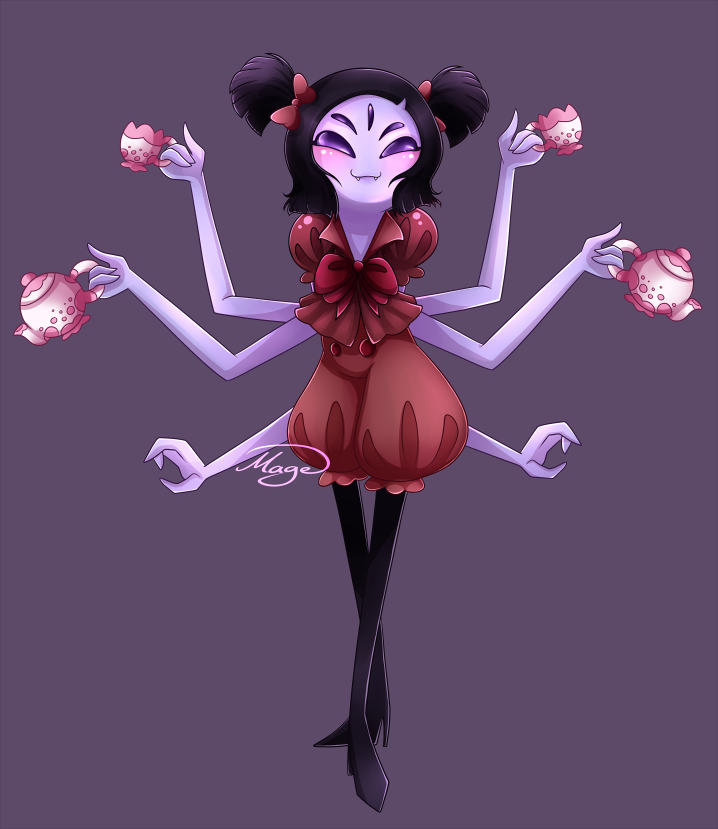 To play this intro, make sure that the fingers of your left hand are in the correct position - the thumb should not wrap around the neck of the guitar, so as not to prevent the bass strings from resonating freely.
To play this intro, make sure that the fingers of your left hand are in the correct position - the thumb should not wrap around the neck of the guitar, so as not to prevent the bass strings from resonating freely.
The melody is played on the fifth and sixth strings, on the clamped and open strings alternately. This catchy tune perfectly trains the coordination of finger movements when playing in various positions.
Dancing Minus - Half
This song is very well known to the Russian listener. Knowing this bust, you will not only become the center of attention of any party, but also learn how to quickly change chords on the guitar.
As you can see from the diagram, the introduction is a few chords played by brute force. By rearranging the fifth chords and playing their notes in the correct order, you will play the song.
The easiest pick on the guitar
Intro Metallica – Nothing Else Matters
This beautiful brute force is perfect for beginners. The first chord of this song can be described as the easiest pick on the guitar, because it is played on open strings. This will help you learn to keep the rhythm well and get in time. The second part of the rhythm is more difficult and requires study, but the result is definitely worth it.
The first chord of this song can be described as the easiest pick on the guitar, because it is played on open strings. This will help you learn to keep the rhythm well and get in time. The second part of the rhythm is more difficult and requires study, but the result is definitely worth it.
Guitar Tunes for Beginners
Intro song Aria - Careless Angel
Russian rock classic. In addition to a recognizable and beautiful melody, this plucking will give you the opportunity to practice chord setting and learn how to decorate plucking with additional notes.
Pay attention to the very beginning of the song. The Em chord is preceded by a four-note intro, which succinctly but very effectively adds charm to the song's melody, adding variety and character.
Pick from Animals - The House Of The Rising Sun
There is hardly a person who has never heard this very recognizable American folk song. There is nothing complicated in its performance - only five chords are played, drawing alternately along the strings from bottom to top and from top to bottom.
Look closely at the tablature below. The sequence of notes drawn on it is supported by the name of the chord in which position these notes are taken.
If you know English words and learn how to play and sing at the same time, then according to this scheme, you can play the whole song, the chords are repeated in it.
Pick from the intro of Led Zeppelin - Stairway to heaven
Perhaps this enumeration will be the most difficult of all that we have mentioned here, however, having analyzed it, you will greatly improve your guitar playing skill. The melody is very recognizable and beautiful, it is a pleasure to play and learn it.
The tablature of the intro of this song has notes about which fingers should be used to pinch positions on the strings. We talked about these notes in more detail here.
In addition to the letter designations of the fingers, the scheme has duplicated numerical designations. Try to play to the rhythm, and for this complex strumming, we recommend using a metronome.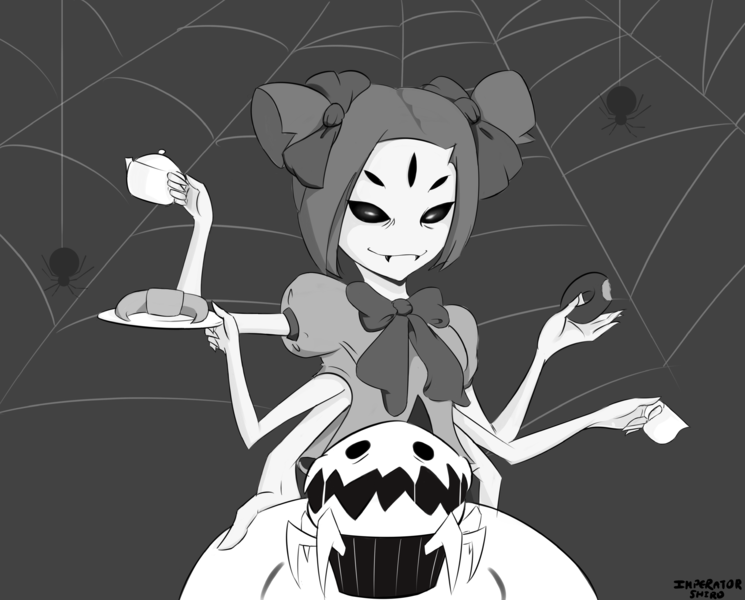
Tags: lessons, guitars
Number of impressions: 47111
Batrachospermum No. 47(109) - Maratus - The Batrachospermum Magazine
Walking around Australia, where, according to prejudice, everything strives to kill you, you can automatically slap a baby that accidentally jumps on your arm or cheek, mistaking it for a dangerous insect, biting and contagious, or not to notice it at all - jumping spiders are so light in weight and even in sight. Until the second decade of our century, few people really noticed them - only inquisitive naturalists, specially prowling among the bush on all fours in search of living creatures, paid attention to them if they stumbled upon them. And not every one of them was eager to look through a microscope at these spiders, unremarkable at a cursory glance - and it is precisely under magnification that all their beauty, cuteness and grace are revealed.
Under the microscope, it becomes possible to appreciate the palette of amazing colors of males Maratus , from iridescent to pareidolatous - with a “face”, “eagle”, “elephant”, “cat” on the abdomen, and maybe even a “frog”. Some species have paired "flaps" on their abdomens - until the end of the last century, many scientists believed that with their help, maratus glide through the air or even fly. But no, males open them at the moment of courtship, when they raise their abdomen and show it in all its glory during the dance. At this moment, they become "peacocks", justifying their popular name (peacock spiders, peacock spiders).
Some species have paired "flaps" on their abdomens - until the end of the last century, many scientists believed that with their help, maratus glide through the air or even fly. But no, males open them at the moment of courtship, when they raise their abdomen and show it in all its glory during the dance. At this moment, they become "peacocks", justifying their popular name (peacock spiders, peacock spiders).
Maratus became famous for dancing. Each species has its own intricate combination of movements of the legs and abdomen. An arthropod fandango or flamenco, combined with super-fast jumps of superheroes, is a life-and-death dance: if the male fails to charm the female, he can become her prey.
All these charming courtships contradict the image of the Spider that has been established for thousands of years. Dear... spider? (In Australia?!) Until ten years ago, the only people on Earth who knew about the existence of peacock spiders and considered them cute were almost exclusively Australian arachnologists. Today, the whole world knows about them - the entire Internet.
Dear... spider? (In Australia?!) Until ten years ago, the only people on Earth who knew about the existence of peacock spiders and considered them cute were almost exclusively Australian arachnologists. Today, the whole world knows about them - the entire Internet.
Maratus' entry into the mainstream was ensured by two factors: the development of macro photography technologies and the popularity of social networks with their insatiable appetite for cute animals. Videos of dancing peacock spiders have gone viral to millions of views, and their photos are liked and reposted/retweeted/shared like kittens. By 2020, the Maratus racehorses have become top influencers in the invertebrate world.
And this growth of interest in them took place against the backdrop of a surge in their scientific study. If in 2010 only seven species of the genus 9 were officially known0106 Maratus , by now their number is already about a hundred. And this is not the limit.
The first maratus
The first scientifically registered spider-packets for steel in 1874 Maratus Speciosus and Maratus Volans -True, then the British Octavius Picard-Kombridge reacted to the genus SALTIC Salticidae ), now the largest in the order of spiders. The specific names of these spiders mean "beautiful" and "flying", respectively. The second just gave rise to the misconception about flying with the help of the "flaps" of the abdomen.
The specific names of these spiders mean "beautiful" and "flying", respectively. The second just gave rise to the misconception about flying with the help of the "flaps" of the abdomen.
Actually, the genus Maratus was introduced into science in 1878 by the curator of the Berlin Museum of Natural History Ferdinand Karsh - he found in the museum bins an unknown male brought by someone from Australia, according to the tag, and named him Maratus amabilis . In honor of some such Marat, a new clan was named - it is not known, in his scientific work Karsh did not explain the etymology of the introduced names. However, he clearly knew a lot about cuteness: amabilis is translated from Latin as “darling”.
For more than a hundred years, almost no one remembered the cute maratus, only in 1987, the Polish specialist in jumpers Marek Zhabka scientifically confirmed the existence of M. amabilis , and at the same time transferred the spider volans to the genus Maratus , which by that time were assigned to the genus Saitis (but another pioneer, speciosus , had to wait for enrollment in Maratus for another quarter of a century). At 19In 1991, Zhabka transferred three more species from the genus Saitis - thus, the genus Maratus was replenished with spiders M. vespertilio (“bat-like”), M. splendens * (“brilliant”) and M. pavonis ("peacock").
amabilis , and at the same time transferred the spider volans to the genus Maratus , which by that time were assigned to the genus Saitis (but another pioneer, speciosus , had to wait for enrollment in Maratus for another quarter of a century). At 19In 1991, Zhabka transferred three more species from the genus Saitis - thus, the genus Maratus was replenished with spiders M. vespertilio (“bat-like”), M. splendens * (“brilliant”) and M. pavonis ("peacock").
*There is an opinion that this species should be called M. rainbowi . A scientist named Rainbow in 1896 described it under the name Attus splendens , not knowing that the same name had previously been given to one North American jumper (now it belongs to species Habronattus decorus ). In the middle of the last century, this fact was revealed, and the spider (then referred to the genus Saitis ) needed a new specific epithet - so it was decided to name it in honor of Rainbow. However, while transferring the species to the genus Maratus , Zhabka retained its former epithet. And until now, some experts call it M. splendens .
However, while transferring the species to the genus Maratus , Zhabka retained its former epithet. And until now, some experts call it M. splendens .
The spider's specific epithet M. pavonis is the first official comparison of the racehorses in question with peacocks, so that the Australian arachnologist R. Dunn, who described this species in 1947, can be called the godfather of peacock spiders. In addition, this researcher was the first to describe in detail the dance of these spiders.
In the 1957 article "The Peacock Spider" in the popular magazine Walkabout Dunn recounted how ten years ago he was mowing the grass in his backyard and encountered a "greatly dressed" spider, whom he adopted and began to study. Dunn called him Saitis pavonis . In the family, the spider was nicknamed Hector - the name was invented by his wife, who "previously treated with a feeling akin to horror everything that even remotely resembled a spider."
Finding that "the life of the male was dominated by the sexual instinct", Dunn caught the female and arranged a rendezvous for them - then he saw that Hector raised his bright and iridescent abdomen, like a peacock's tail, and performed intricate steps. “Hector's mating dance has been observed repeatedly since then, and each time enchanted everyone who was lucky enough to see this performance,” Dunn concluded.
Another reference to peacocks (Pavo cristatus) is contained in the name of the spider Maratus cristatus, described in 2017: it is also “crested” - eight small tufts of bristles can be seen on the edge of its abdomen. Two morphs of this species are known, differing in the color of the bristles on the cephalothorax and legs: in some males they are brown (left), in others they are white (right). Maratus mungaich and Maratus linnaei live in southwestern Australia (like M. cristatus above) - a region with the highest variety of peacock spiders, and indeed any living creatures. Photo: Jurgen Otto.
Two morphs of this species are known, differing in the color of the bristles on the cephalothorax and legs: in some males they are brown (left), in others they are white (right). Maratus mungaich and Maratus linnaei live in southwestern Australia (like M. cristatus above) - a region with the highest variety of peacock spiders, and indeed any living creatures. Photo: Jurgen Otto. Two other important maratus were described in 1995 and 2008 by Julianne Waldock, an arachnologist at the Western Australia Museum in Perth: M. mungaich (the Aboriginal name for banksia, whose trees grow in the species' habitat east of Perth) and M. linnaei (in honor of Carl Linnaeus, of course).
Well, in the 2010s, the genus Maratus , as we now know, underwent a taxonomic explosion - not so much even due to the transfer of racehorses from other genera into it (in 2012 M. speciosus has finally become a maratus), how much due to new finds, most of which were described by Jürgen Otto and David Hill.
Peacock Spider-Man
German-born, middle-aged, slightly color-blind and social media-friendly, tick specialist Jurgen Otto in the 2000s hardly aspired to be the peacock spider ambassador for the next decade. the entire internet. On the other hand, he is a keen photographer, not to say a maniac, besides, a zoologist and a resident of Sydney - a good initial combination of qualities for a spokesman for Australian horses.
Maratus anomalus (left), living in the east of the continent, was described by Ferdinand Karsh under the name Lycidas in the same scientific work of 1878, where the word Maratus first appeared, and was actually assigned to Maratus only in 2012. Its related Maratus vultus (right) was described by Otto and Hill in 2016, its specific epithet means “face”: the abdomen looks and smiles; this spider lives in southwestern Australia, also found in the southeastern state of Victoria. Three more species transferred in 2012 from the genus Lycidas to the genus Maratus: related to each other M. chrysomelas ("golden black"), widespread in Australia, and M. nigromaculatus ("black-spotted") from the northeast of the continent, as well as M. speculifer ("mirror-bearer") from the southwest, a slightly more distant relative of them. Photo: Jurgen Otto.
chrysomelas ("golden black"), widespread in Australia, and M. nigromaculatus ("black-spotted") from the northeast of the continent, as well as M. speculifer ("mirror-bearer") from the southwest, a slightly more distant relative of them. Photo: Jurgen Otto. Jurgen first became aware of the existence of Maratus in September 2005, shortly after moving to Sydney. During a family walk in the national park, combined with endless photographing of local flora and small animals, he noticed something jumping on a stone. It was a tiny spider with some yellow things on the sides - Jurgen had no idea then that spiders had “flaps” on their abdomens.
He photographed the find, but found nothing of the kind on the Internet - then there were no photographs of peacock spiders. Only in the book "Australian Spiders in Color" 19At the age of 70, he managed to find his spider - Saitis volans . A year later, he came across articles by Julianne Waldock, from which he learned that now this species belongs to the genus Maratus and does not soar on the “flaps”, as it is written in the book, but probably uses them to attract a female during the dance.
At first, Jürgen did not want to part with the myth. “I could have sworn that I myself saw him fly,” Otto writes in his memoirs. - Those agile and long jumps that I observed in the field looked exactly as described. This animal seemed to be endowed with special abilities. But in October 2008, he became convinced that Waldock was right: he caught several males at once M. volans , as well as a larger faded spider (presumably a female), recreated on the dining table their usual environment of leaves and branches, launched jumpers there and - watched the dance of the male with spread “flaps”!
Maratus pardus (left) has a leopard-colored belly from southern Western Australia, described in 2014. Maratus elephans (right) with an elephant head pattern on its abdomen lives in the state of New South Wales in the east of the country, described in 2015. Both spiderlings were considered relatives of M. volans, however, according to the 2021 analysis, this is true only for the second of them. Photo: Jurgen Otto.
Both spiderlings were considered relatives of M. volans, however, according to the 2021 analysis, this is true only for the second of them. Photo: Jurgen Otto. The spiders now settled on the table for a long time - Jurgen wanted to take as many good pictures and videos as possible. I had to dine in the half free of heaps - to the great displeasure of my relatives. The number of pets soon numbered in the hundreds, and each of them had to be given time. It takes half a minute to feed one spider, says Otto, and now imagine that you have three hundred of them! Like tractors for a tractor driver! “I used to have other hobbies: playing the guitar, surfing,” recalls the scientist. “And all this had to be abandoned for the sake of spiders.”
He began to spread his achievements on the Internet under the nickname Peacock Spider Man - “Peacock Spider Man”. Glory was not long in coming. The World Wide Web has never known anything about peacock spiders before, having never seen their colorful bellies or their amazing dances. The very first video with dances M. volans (see above) collected two million views, and dances M. speciosus posted a few years later (see below) - more than eight. In another millionaire video, maratus dance to the Bee Gees - Stayin' Alive (at the beginning of the article). Thanks to Otto, David Attenborough found out about peacock spiders and soon his commentary on the “spider dance for life” could be heard in a BBC documentary. Someone else cut and photoshopped Jurgen's Christmas-themed video - an instant hit.
The very first video with dances M. volans (see above) collected two million views, and dances M. speciosus posted a few years later (see below) - more than eight. In another millionaire video, maratus dance to the Bee Gees - Stayin' Alive (at the beginning of the article). Thanks to Otto, David Attenborough found out about peacock spiders and soon his commentary on the “spider dance for life” could be heard in a BBC documentary. Someone else cut and photoshopped Jurgen's Christmas-themed video - an instant hit.
 Photo: Jurgen Otto.
Photo: Jurgen Otto. But even before all this hype, the photographs published by Jurgen Otto attracted the attention of the American arachnologist David Hill, editor-in-chief of the scientific journal Peckhamia , entirely devoted to the research of jumping spiders. In the past, Hill did a dissertation on the behavior of jumping horses, and the magazine became an outlet for him after leaving the business. Despite the distance, Otto and Hill managed to find mutual understanding and mutual respect, establish cooperation and publish dozens of joint scientific articles on Maratus. It's funny, but Hill has never been to Australia and never saw any of them live.
Civil maratology
In 2011, Otto and Hill described their first new species - Maratus harrisi . “The spider is a treasure, there is so much blue in it, and blue is my favorite color, the only one I can really see,” says Jurgen. Two years earlier, he had found a photo of him on the Internet, posted by Stuart Harris, a former garbage collector from Canberra (once he came across a suitcase full of sex toys, but that's a different story). Jurgen contacted Stewart and said that this is probably a species unknown to science, so I would really like to study the spider. But first you need to catch it.
Jurgen contacted Stewart and said that this is probably a species unknown to science, so I would really like to study the spider. But first you need to catch it.
Harris turned out to be a great enthusiast (including in terms of physical size) and stubbornly searched for a spider for more than a year, until he finally caught it. He suggested calling it M. harrisotto in honor of himself and Otto, but the scientist considered this name to be similar to an Italian dish and preferred to dedicate the spider exclusively to its discoverer. It was the first in a series of discoveries made by Harris and described by Otto and Hill. Tiny spiders have changed the life of a tall man. They even made a documentary about him.
It was the first in a series of discoveries made by Harris and described by Otto and Hill. Tiny spiders have changed the life of a tall man. They even made a documentary about him.
Southeast of Canberra, on the Sapphire Coast of New South Wales, Stuart Harris found a spider, later named Maratus sapphirus - not only at the place of discovery, but also because of the blue “flaps” that look like sapphires. He found another wonderful peacock on the Black Mountain hill right in Canberra: Maratus calcitrans kicks its foot unusually fast when it dances. It was described in 2012 along with the spider Maratus digitatus , which, during the dance, moves the spider warts on the tip of the abdomen, like fingers.
Maratus calcitrans ("kicking") lives in the southeast of Australia, Maratus digitatus ("finger") - in the east of the country. Together with M. jactatus (lower right), these two spiders belong to the same family group. But the other two from below, as it turned out, are not related to the three of them. Maratus plumosus (“feathered”) is widespread in the southeast of the continent, described in 2013. Maratus sceletus ("skeletal") and Maratus jactatus ("shaking") were found in the Vondul Range National Park in eastern Australia, described in 2015. Photo: Jurgen Otto.
Maratus plumosus (“feathered”) is widespread in the southeast of the continent, described in 2013. Maratus sceletus ("skeletal") and Maratus jactatus ("shaking") were found in the Vondul Range National Park in eastern Australia, described in 2015. Photo: Jurgen Otto. Also in 2012, Otto and Hill described one of the smallest peacock spiders, only 2 mm long - Maratus robinsoni . It was opened in Newcastle, New South Wales by Peter Robinson, "a fisherman with the biggest hands I've ever seen," says Otto. This is just an amazing spider. The color of the ornament on its abdomen is changeable due to the structural color of the scales that make it up: during the dance (video below), the light falls on them from different angles, and the abdomen shimmers like a rainbow! And the black fragments are so black that scientists call them “super black”: the scales on them are unique in structure, they can even be used to create devices for space research!
The same article describes species Maratus spicatus from Perth and its environs, Western Australia: its abdomen is also of a very original color, and bristles resembling thorns protrude along the edges, for which the spider was called "prickly". Measuring only 3 mm, it is tied for third smallest among spider peacocks Maratus nimbus from New South Wales and South Australia - it is called "cloudy" for cirrus clouds in the blue sky, or rather, on the abdomen. And in 2013 he received a description of handsome Maratus purcellae - in honor of Michaela Purcell, who discovered the baby in the backyard of her house in Canberra. This iridescent blue-spotted yellowling shares the title of the smallest peacock with M. robinsoni . All these maratus, in addition to being small champions within the genus, are also close relatives to each other.
Measuring only 3 mm, it is tied for third smallest among spider peacocks Maratus nimbus from New South Wales and South Australia - it is called "cloudy" for cirrus clouds in the blue sky, or rather, on the abdomen. And in 2013 he received a description of handsome Maratus purcellae - in honor of Michaela Purcell, who discovered the baby in the backyard of her house in Canberra. This iridescent blue-spotted yellowling shares the title of the smallest peacock with M. robinsoni . All these maratus, in addition to being small champions within the genus, are also close relatives to each other.
“It has always amused me that people consider peacock spiders to be tiny,” writes Jurgen Otto, who has specialized in even smaller mites for many years. “From my point of view, they are gigantic!”
“From my point of view, they are gigantic!”
The most gigantic is Maratus caeruleus (“blue”), the body length of males reaches almost 8 mm! Spiders of this species live on the Middle Island of the Recherches archipelago (Western Australia), and Otto suggests that they can serve as an example of such a well-known ecological phenomenon as island gigantism (enlargement in isolation). Just 15 km away on the mainland, the closely related species Maratus avibus ("bird") lives, and its males are much smaller - 4.5 mm (average values for maratus). The two species can interbreed and produce viable offspring, Jürgen found. The abdomens of their males are very similar, but M. avibus on the "flaps" you can see black birds with red beaks and tufts looking at each other.
The second largest peacock spider is Maratus sarahae (in honor of the ecologist Sarah Comer): its size is 7.5 mm. The range of the species covers only two peaks of the Stirling Range in Western Australia - these spiders can hardly be found anywhere else, given the specifics of the habitat and local climate. Otto is worried about them: they will simply have nowhere to escape from warming, because there are no other such high and cold peaks nearby, and fires may well get there, the frequency of which will obviously not decrease in the future. Jumpers M. sarahae may become the first victims of global warming among maratus, the scientist fears.
Otto is worried about them: they will simply have nowhere to escape from warming, because there are no other such high and cold peaks nearby, and fires may well get there, the frequency of which will obviously not decrease in the future. Jumpers M. sarahae may become the first victims of global warming among maratus, the scientist fears.
Jurgen Otto's tireless research and media activism inspire a small but devoted army of citizen scientists and photographers throughout Australia. For example, the Project Maratus team travels around the continent for weeks in search of “Australian mini-birds of paradise”, as the guys called peacock spiders, and also popularizes them on social networks. It was they who first found in the south-west of the country three maratus, which we showed you in this article - “feline” ( M. felinus ), "eagle" ( M. aquilus ) and "burnt" ( M. combustus ). And they were described by another follower of Jurgen - the young scientist Joseph Schubert, who went from an arachnophobe to an arachnologist.
For example, the Project Maratus team travels around the continent for weeks in search of “Australian mini-birds of paradise”, as the guys called peacock spiders, and also popularizes them on social networks. It was they who first found in the south-west of the country three maratus, which we showed you in this article - “feline” ( M. felinus ), "eagle" ( M. aquilus ) and "burnt" ( M. combustus ). And they were described by another follower of Jurgen - the young scientist Joseph Schubert, who went from an arachnophobe to an arachnologist.
Australian Spring in the Wild West
As a child, Joe was mortally afraid of spiders, and in his teenage years, in order to overcome his phobia, he began to plant them at home - and gradually fell in love. In 2016, he learned about the lovely racehorses Maratus from Facebook and decided to look for them himself - and soon found them. Since then, Joe has not stopped looking for them, finding them, admiring and describing them.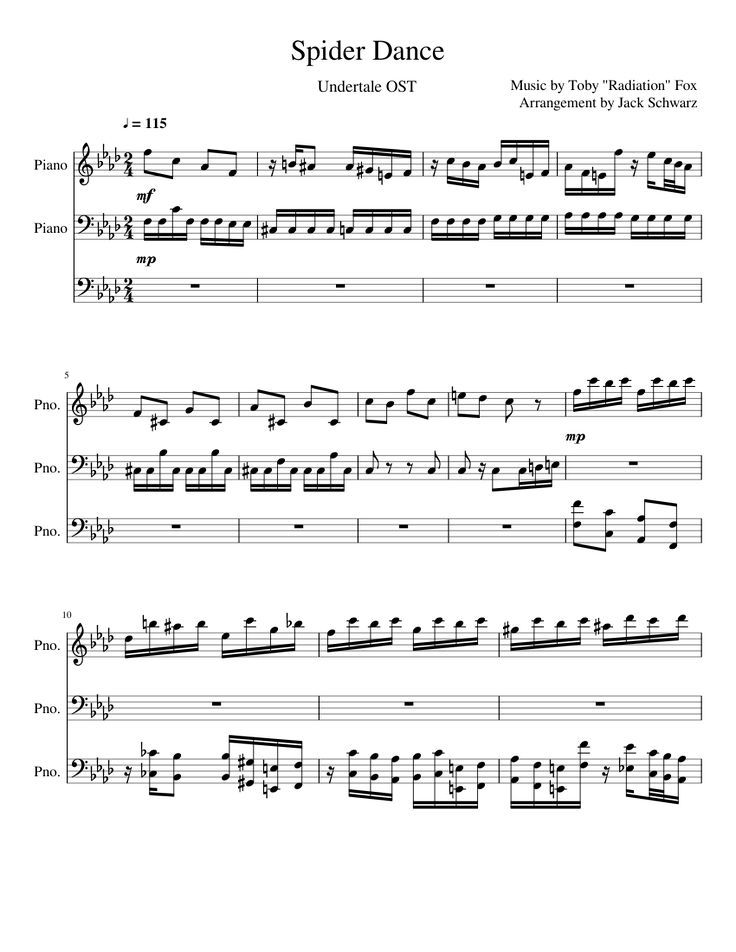 Now he works as a research assistant in the department of arachnology at the Victoria Museums in Melbourne - and he is not afraid.
Now he works as a research assistant in the department of arachnology at the Victoria Museums in Melbourne - and he is not afraid.
“Honestly, they (peacock spiders) are everywhere,” says the boy. – Tasmanicus ( M. tasmanicus ) can be found in twenty minutes from the museum. If you are on the beach, look into carpobrotus (such a plant). Yes, at least look at the right hand - and there is also a maratus (Joseph's tattoo).
But that doesn't mean they're easy to find. “Peacock spiders are mostly active in the spring, when they are breeding, and at other times of the year, bright adult males are very difficult, if not impossible, to find, as they usually die shortly after the mating season is over,” explains Schubert. "And even when they're active, they're not easy to spot unless the weather conditions are perfect: not too cold, not too hot, not too sunny, not too shady, not too windy—well, you get the idea, it's almost like a lottery."
Maratus tasmanicus (left) was first discovered in Tasmania, distributed in southeastern Australia. Maratus occasus (right) lives in the east of the country. These related species were described in 2013 and 2019. Maratus australis (center) from the southern coast of Western Australia is similar to them, especially the former, but is not closely related to them, as the authors of its description believed in 2016. Photo: Jürgen Otto, Michael Duncan. Maratus sagittus and Maratus madelineae are the spiders mentioned in the paragraphs below. Photo: Robert Whyte, Jürgen Otto.
Maratus occasus (right) lives in the east of the country. These related species were described in 2013 and 2019. Maratus australis (center) from the southern coast of Western Australia is similar to them, especially the former, but is not closely related to them, as the authors of its description believed in 2016. Photo: Jürgen Otto, Michael Duncan. Maratus sagittus and Maratus madelineae are the spiders mentioned in the paragraphs below. Photo: Robert Whyte, Jürgen Otto. At 23, Joseph Schubert is already the author of scientific descriptions of 12 species of maratus - we showed them all in the spring article. He was working on a description of his first new peacock spider, M. sagittus with an arrow on its abdomen, at the home of his supervisor Barbara Baer and her husband Robert Raven, arachnologists at the Queensland Museum in Brisbane. Barbara herself described more than six hundred species and contributed to the Australian spider guide with the beautiful M. speciosus on the cover - Joe has a copy dedicated to "Joseph, the most spider-obsessed man I know. "
"
In general, Barbara Baer specializes in anteater spiders (family Zodariidae ), but in 2016, together with her colleague Robert White, she also described six species of peacock spiders. Two of them are named after the largest maratus experts - Julianne Waldock and Jurgen Otto: M. julianneae and M. ottoi (it is also called "octopus" because of the pattern on the abdomen). One more - M. michaelorum - Dedicated to two Michaels, Do and Duncan, from Project Maratus, the civic science project mentioned above. Evolutionary biologist Damian Elias from the University of California at Berkeley (USA) was awarded the spider M. eliasi for helping his wife Madeleine Girard find peacocks for her thesis on the evolution of their sexual behavior (Madeleine herself was awarded the maratus two years earlier - the Western Australian species M madelineae was described by Julianne Waldock). Jumper M. licunxini was named after the artistic director of the Queensland Ballet, Li Cunxin.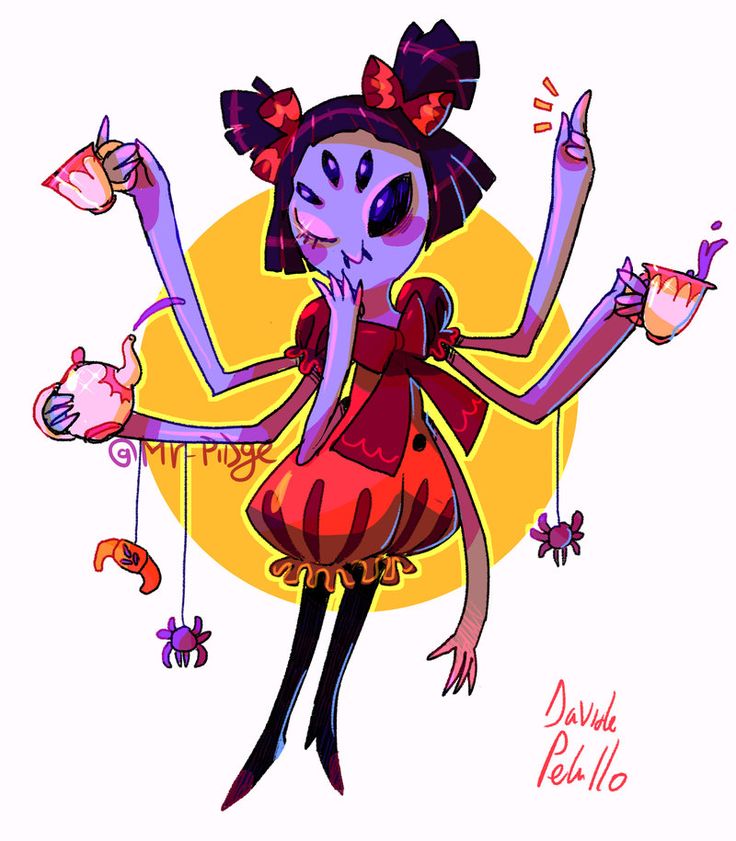 These five maratus live in Queensland, and the sixth - M. kiwirrkurra - in Western Australia, it is named after the local Aboriginal community.
These five maratus live in Queensland, and the sixth - M. kiwirrkurra - in Western Australia, it is named after the local Aboriginal community.
In general, the scientific community devoted to the study of peacock spiders is quite small - only a few specialists. Why not more? Yes, it's just that biologists for the most part are not greedy for bright and charismatic creatures. On a walk, they do not seem to notice the orchids and batrachospermums flaunting around, but only dull club mosses and seedy moss welcome. They brush aside colorful butterflies and picturesque birds, and look only at sleepy rodents and unkempt flies. In addition, research is usually funded on those species that may pose a threat to humans or harm agriculture. That is why much more is known, for example, about ticks than about peacock spiders, laments Jürgen Otto.
On a walk, they do not seem to notice the orchids and batrachospermums flaunting around, but only dull club mosses and seedy moss welcome. They brush aside colorful butterflies and picturesque birds, and look only at sleepy rodents and unkempt flies. In addition, research is usually funded on those species that may pose a threat to humans or harm agriculture. That is why much more is known, for example, about ticks than about peacock spiders, laments Jürgen Otto.
On the other hand, now that the cutest horses are so popular on the Internet and the news about them attracts a lot of attention, the competition among scientists is already high. Barbara Baer compares the current situation to the Wild West, "except that no one is firing at each other yet." But in social networks, sometimes there are unpleasant skirmishes, when gibberish and trolls in the comments call Maratus "bad dancers", "ugly", "x#yatus". Jurgen Otto has already begun to get tired of such negativity and is gradually reducing his online activity, preferring to focus on new hobbies - learning Arabic, dreaming about trips to the Middle East. Due to the stress associated with the incessant study and popularization of peacock spiders, he already has a ringing in his ears, devil take him.
Due to the stress associated with the incessant study and popularization of peacock spiders, he already has a ringing in his ears, devil take him.
Jurgen is also worried about the fate of his pets, especially with the approach of the Australian summer with its fires that can exterminate the unfortunate spiders if they walk through their habitats. After such disasters, it is incredibly difficult for populations to recover - one can hardly expect peacock spiders to re-populate burned habitats. Some species with particularly narrow ranges, such as M. sarahae , may disappear altogether. In addition, it is in the southwest and southeast of the country - in regions with the highest diversity of maratus - that agriculture and urbanization are developing most intensively.
After such disasters, it is incredibly difficult for populations to recover - one can hardly expect peacock spiders to re-populate burned habitats. Some species with particularly narrow ranges, such as M. sarahae , may disappear altogether. In addition, it is in the southwest and southeast of the country - in regions with the highest diversity of maratus - that agriculture and urbanization are developing most intensively.
“I suspect that the peacock fauna of Australia used to be (before European colonization) much richer than today, and we are seeing only a pitiful remnant of it,” says Otto.
Short as a pedipalp conclusion
How many more species of peacock spiders lurk in urban areas, in tussocks, bushes, and maybe forests? According to Jurgen Otto, the boom of "maratological" discoveries is already running out. The vast majority of species of the genus Maratus were discovered and described in the past decade. Some novelties have been found and are awaiting scientific registration, but there are not many of them. Some more species of disputed generic affiliation are waiting for new finds, re-analysis and revision. The total number of maratuses can exceed one hundred, Joseph Schubert is optimistic.
Some more species of disputed generic affiliation are waiting for new finds, re-analysis and revision. The total number of maratuses can exceed one hundred, Joseph Schubert is optimistic.
As long as Australia goes from lockdown to lockdown, you can't really plan scientific expeditions, so you can't expect fresh unprecedented maratus from this spring. Otto, probably, slowly describes those few novelties or adds a summary review of the already described peacock spiders. Schubert, on the other hand, focused on related horses Jotus - 14 species are now known, five of which Joe and his colleagues described only last year, but a large-scale revision of this genus is coming with a description of several species new to science.






